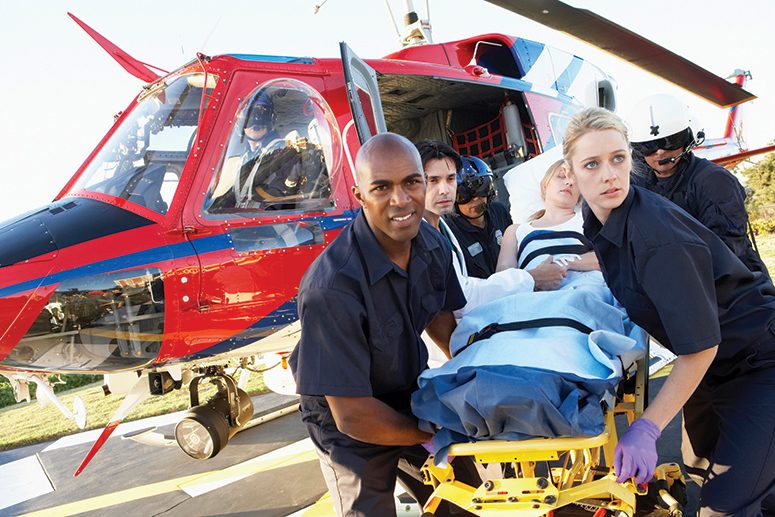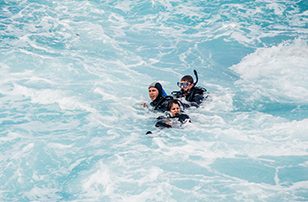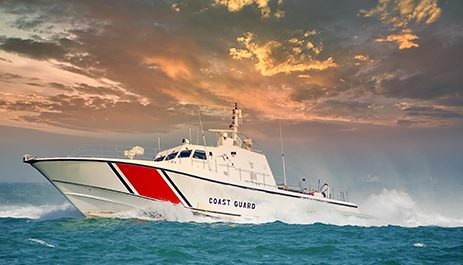Accessing Emergency Assistance

Rescue or evacuation services may not be available in some very remote locations. All travelers — especially those going to remote territories — should develop an emergency action plan in the event they encounter unforeseen circumstances. The U.S. Department of State may assist you in an emergency, but you will have to pay your travel and accommodation expenses.16
Your emergency action plan should include emergency contact numbers and details about what services may be available at your destination. Make extra copies of your passport and travel documents to keep with you, and provide copies to someone back home.
A benefit of DAN membership is to assist with all three stages of emergency medical assistance for travelers: rescue, evacuation and repatriation.
Rescue
The process of locating travelers in need of assistance, retrieving them and getting them to someone who can provide initial medical care is defined as the rescue phase of assistance. DAN’s ability to help with the early stages of a DAN member’s rescue in a remote wilderness area or far out at sea may be very limited. Sometimes a traveler is unable to alert DAN due to poor communications, or search-and-rescue teams may be out of range or unavailable in that region. Even with good communications, contacting DAN might not be the most expedient way of accessing rescue assistance; local rescue organizations may offer the best service.
Travelers who are going to remote locations should have an emergency action plan that includes the contact information for a remote rescue service in that region. These services could include local emergency medical services, the nearest search-and-rescue team, the country’s coast guard or even the local police, whatever might be applicable. Verify that they would be available to assist you in the event of an emergency. Contact the local service first if the need for a rescue arises.
Search-and-rescue operations can be quite expensive, so travelers to remote areas should have insurance that will cover such assistance. Even policies that cover rescues generally limit the reimbursable amount and typically pay only organizations that are trained and approved to undertake search-and-rescue missions.

The three stages of emergency medical assistance for travelers are: rescue, evacuation and repatriation.

While DAN members hope to never need the emergency medical assistance benefit that DAN membership provides, they are glad to have it available if the need arises.

Below is a list of emergency numbers from around the world. Some countries have different numbers for different types of emergencies. Research the emergency numbers for your destination before traveling.
000 – Australia
106 – Australia for text/phone/TTY
110 – China, Korea, Japan (different numbers for ambulance and fire)
112 – European Union, Russia and on GSM mobile networks across the world Also, the National Sea Rescue Institute in South Africa uses 112 from within South Africa.
100 – India, Greece, and Israel
108 – India (22 states)
119 – Jamaica and parts of Asia
111 – New Zealand
911 – North America, Philippines, and most countries in Central America
and South America
999 – Number used in many other countries
122 – Specific services in several countries
Medical Evacuation
A medical evacuation (medevac) is the transportation of an injured or sick person from one medical facility, such as a small hospital that provides an initial assessment and primary care, to another facility that can provide more comprehensive and sophisticated care. A medevac begins after medical personnel at the nearest medical facility have evaluated the patient’s condition and when resources to evacuate the individual are available. Transportation is usually by land or air, but a boat might be the only available evacuation method in some remote areas.
Travel assistance organizations optimize the evacuation process by balancing several factors: the type and urgency of the medical need, the available means of evacuation and the proximity of facilities that can provide care. An evacuation may be delayed due to factors such as inclement weather or the unavailability of transportation at night. Patients will not necessarily be returned to their countries of origin but instead will be moved to the closest, most appropriate medical facility before they can move on to the next level of care.
A medical evacuation sometimes can cost more than $100,000 if it includes several stages or requires the use of a specialized air ambulance. Insurance that covers evacuation is essential if you plan to travel to a remote area.
Repatriation
Transportation of ill or injured travelers back to their home countries is called repatriation. Insured travelers who are injured or fall sick while traveling and require hospitalization will be returned to their home country at the insurer’s expense if their condition warrants medical travel, if they are stable enough to travel and if the travel does not pose any additional risk to their condition.
For DAN members, DAN TravelAssist makes all such medical determinations in consultation with the treating physicians and then makes all travel arrangements if they deem repatriation is advisable.
While DAN members hope to never need the emergency medical assistance benefit that DAN membership provides, they are glad to have it available if the need arises. To ensure coverage, members MUST contact DAN to arrange for and coordinate ALL emergency medical assistance.


Medical Rescue and
Medical Evacuation
A rescue is an attempt to save someone from a dangerous or unpleasant situation. In emergency medicine, a medical rescue is any activity that brings a victim (of disaster or accident) to safety.
A medical evacuation (medevac) is the timely and efficient movement and en route care of a patient by medical personnel. This evacuation can be transportation either from the scene of an accident to a receiving medical facility or between medical facilities.
The main difference between the two terms is that a medical rescue is the emergency transportation efforts necessary for an injured person in the field to become a patient at a medical facility or at a point where local emergency medical services can take over; in a medical evacuation, the person being transported is already a patient.
DAN Customer Service
Mon–Fri, 8:30 a.m. – 5 p.m. ET
+1 (919) 684-2948
+1 (800) 446-2671
Fax: +1 (919) 490-6630
24/7 Emergency Hotline
In event of a dive accident or injury, call local EMS first, then call DAN.
24/7 Emergency Hotline:
+1 (919) 684-9111
(Collect calls accepted)
DAN must arrange transportation for covered emergency medical evacuation fees to be paid.
Medical Information Line
Get answers to your nonemergency health and diving questions.
Mon–Fri, 8:30 a.m. – 5 p.m. ET
+1 (919) 684-2948, Option 4
Online: Ask A Medic
(Allow 24-48 hours for a response.)